Disinfecting Your Toothbrush: Why and How
Maintaining proper oral hygiene extends beyond regular brushing and flossing; it encompasses the care and cleanliness of your dental tools, particularly your toothbrush. The humble toothbrush, a daily companion in our oral care routine, can harbor a surprising number of microorganisms, potentially compromising our oral health. This article delves into the critical importance of toothbrush disinfection, exploring the reasons behind this necessity and providing comprehensive methods to ensure your toothbrush remains a tool for health rather than a vector for bacteria.
In the following sections, we will examine the microbial ecosystem that can develop on your toothbrush, the potential health risks associated with neglecting toothbrush hygiene, and the various effective methods for disinfection. We’ll also address common misconceptions and provide practical tips for maintaining a clean toothbrush. By understanding the why and how of toothbrush disinfection, you’ll be equipped to make informed decisions about your oral care routine, ultimately contributing to your overall health and well-being.
Why Disinfect Your Toothbrush?
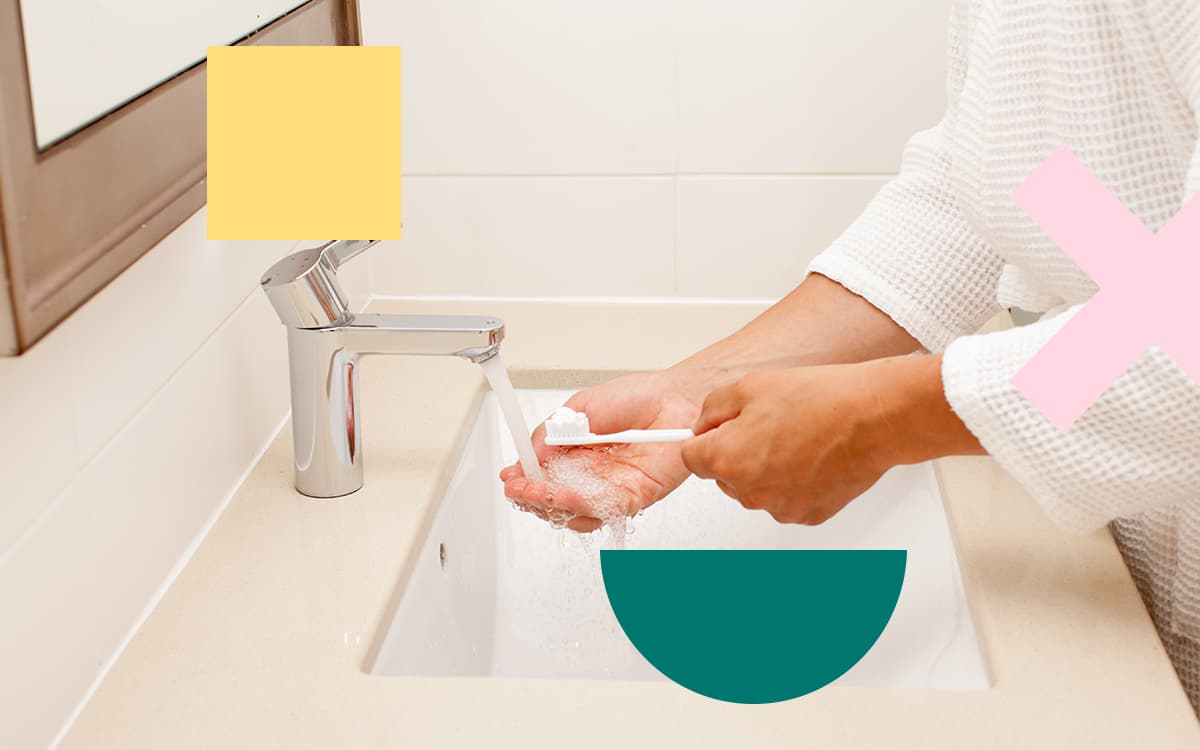
Toothbrushes serve as ideal breeding grounds for microorganisms due to their moist environment and frequent exposure to oral bacteria. The human mouth harbors over 700 species of bacteria, many of which can transfer to and thrive on toothbrush bristles. These microorganisms multiply rapidly in the warm, humid bathroom environment, potentially reaching harmful levels within days.
Research conducted by the University of Manchester found that a single toothbrush can host up to 10 million bacteria, including harmful pathogens like Streptococcus, Staphylococcus, and even E. coli. These bacteria can lead to various oral health issues, including:
1. Gingivitis and periodontitis
2. Oral thrush
3. Dental caries
4. Systemic infections in immunocompromised individuals
Moreover, toothbrushes stored in close proximity to toilets are at risk of contamination from aerosolized toilet plume, which can spread fecal coliform bacteria. A study published in the Journal of Applied Microbiology revealed that toilet flushing could propel these microscopic particles up to six feet away, potentially landing on exposed toothbrushes.
Sharing toothbrushes exacerbates the risk of bacterial transmission. The American Dental Association strongly advises against this practice, as it can lead to the exchange of bodily fluids and potentially harmful microorganisms. This is particularly dangerous for individuals with compromised immune systems, as they are more susceptible to infections.
How to Disinfect Your Toothbrush

Effective toothbrush disinfection involves a combination of proper cleaning techniques and regular sanitization methods. Here are several evidence-based approaches to ensure your toothbrush remains a hygienic tool for oral care:
1. Regular Cleaning:
The foundation of toothbrush hygiene begins with thorough rinsing after each use. Hold your toothbrush under running water for at least 10 seconds, ensuring all bristles are flushed clean. Shake off excess water and store the brush upright in an open-air container to promote drying. Moisture retention encourages bacterial growth, so allowing your toothbrush to air dry is crucial.
2. Boiling Water Method:
Immersing your toothbrush in boiling water for 3 minutes can effectively eliminate most harmful microorganisms. A study published in the Brazilian Dental Journal found that this method reduced bacterial contamination by up to 99%. However, exercise caution as prolonged exposure to high temperatures may warp plastic bristles or handles.
3. Antibacterial Mouthwash Soak:
Soaking your toothbrush in an antibacterial mouthwash for 2 minutes can significantly reduce bacterial load. Choose an alcohol-free mouthwash to prevent bristle damage. Research in the Journal of Clinical and Diagnostic Research demonstrated that this method could reduce microbial contamination by up to 78%.
4. Hydrogen Peroxide Solution:
Create a solution of equal parts 3% hydrogen peroxide and water. Soak your toothbrush for 5 minutes to effectively disinfect it. A study in the Journal of Conservative Dentistry found this method to be highly effective in reducing bacterial contamination. Rinse the brush thoroughly with water before use to remove any residual peroxide.
5. UV Sanitizers:
UV-C light sanitizers have gained popularity for their effectiveness in killing bacteria without chemicals. These devices use short-wavelength ultraviolet light to destroy microbial DNA. A study in the American Journal of Dentistry found that UV sanitizers could eliminate up to 99.9% of bacteria on toothbrushes.
Here’s a comparison table of different disinfection methods:
| Method | Effectiveness | Cost | Convenience | Potential Risks |
|---|---|---|---|---|
| Boiling Water | High | Low | Moderate | Bristle damage |
| Mouthwash Soak | Moderate | Low | High | None |
| Hydrogen Peroxide | High | Low | High | None |
| UV Sanitizer | Very High | High | Very High | None |
Additional Tips for Toothbrush Hygiene:
1. Replace your toothbrush or electric toothbrush head every 3-4 months, or sooner if bristles become frayed.
2. Store toothbrushes upright in a clean, dry place, away from toilets and sinks.
3. Avoid storing toothbrushes in closed containers, which can create a moist environment conducive to bacterial growth.
4. Never share toothbrushes, even among family members.
5. Consider using antimicrobial toothbrushes, which incorporate materials like silver nanoparticles to inhibit bacterial growth.
The Role of Proper Storage
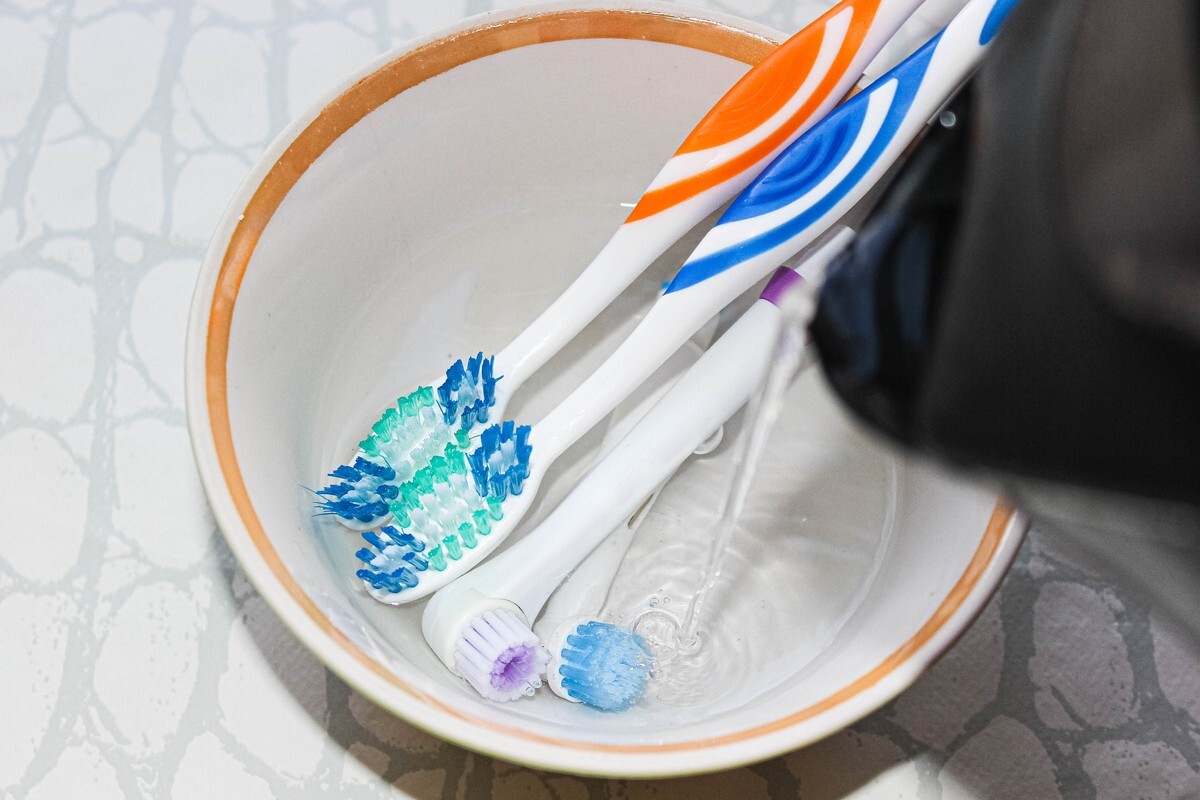
Proper toothbrush storage plays a crucial role in maintaining hygiene between uses. The bathroom, while convenient, presents several challenges due to its humid environment and proximity to potential contaminants. To mitigate these risks:
1. Position your toothbrush holder at least 3 feet away from the toilet to minimize exposure to aerosolized particles during flushing.
2. Ensure adequate ventilation in your bathroom to reduce humidity levels.
3. Consider using a toothbrush cover that allows airflow while protecting bristles from environmental contaminants.
4. If traveling, use a ventilated toothbrush case to prevent moisture accumulation and bacterial growth.
The Impact of Toothbrush Material
The material composition of your toothbrush can influence its susceptibility to bacterial colonization. Studies have shown that nylon bristles tend to harbor fewer bacteria compared to natural bristles. Additionally, toothbrushes with antimicrobial properties, such as those infused with silver nanoparticles or treated with triclosan, have demonstrated enhanced resistance to bacterial growth.
However, it’s important to note that while these materials may reduce bacterial accumulation, they do not eliminate the need for regular cleaning and disinfection. The mechanical action of brushing and proper post-use care remain essential components of toothbrush hygiene.
Addressing Common Misconceptions
Several myths persist regarding toothbrush care and disinfection:
1. Myth: Dishwashers are effective for toothbrush disinfection.
Fact: While dishwashers can reach high temperatures, they may not be suitable for toothbrushes due to the harsh detergents used and potential for cross-contamination with food particles.
2. Myth: Microwave sterilization is safe and effective.
Fact: Microwaving can damage toothbrush materials and may not uniformly disinfect all areas of the brush.
3. Myth: Daily disinfection is necessary.
Fact: While regular cleaning is important, daily disinfection may be excessive for most individuals. Weekly disinfection, coupled with proper daily care, is generally sufficient.
Conclusion
Maintaining a clean toothbrush is an integral part of oral hygiene that is often overlooked. By understanding the importance of toothbrush disinfection and implementing effective cleaning methods, you can significantly reduce your exposure to harmful bacteria and promote better oral health. Remember that disinfection is just one aspect of toothbrush care; proper storage, regular replacement, and good brushing habits all contribute to a comprehensive oral care routine and maintain a good toothbrushes for receding gums.
As you incorporate these practices into your daily life, you’ll not only enhance your oral hygiene but also contribute to your overall health and well-being. A clean toothbrush is a simple yet powerful tool in maintaining a healthy smile and preventing oral infections. By taking the time to care for your dental tools, you invest in your long-term health, ensuring that each brush stroke contributes positively to your oral ecosystem.

Meet David Anderson, Your Guide to Healthier Gums Welcome, I’m David Anderson, and I’m passionate about oral health. As someone who has personally experienced the challenges of receding gums, I understand the importance of finding the right toothbrush to protect and maintain gum health. That’s why I founded goodtoothbrushesforrecedinggums.com – to share my knowledge and expertise with others who are facing similar issues. With years of research and personal experience, I’ve curated a comprehensive resource dedicated to helping you find the best toothbrushes for receding gums. On our website, you’ll find: In-depth Reviews: We rigorously test and evaluate a variety of toothbrushes specifically designed for receding gums, providing you with honest and detailed reviews to guide your decision. Informative Guides: We offer expert advice and practical tips on how to choose the right toothbrush, proper brushing techniques, and other oral care practices that can help improve gum health. Community Support: We foster a supportive community where you can connect with others who are also dealing with receding gums, share experiences, and learn from each other. At goodtoothbrushesforrecedinggums.com, we believe that everyone deserves a healthy smile. Our mission is to empower you with the knowledge and tools you need to take control of your gum health and enjoy a confident smile for years to come. Join us on our journey to healthier gums! David Anderson Founder, goodtoothbrushesforrecedinggums.com
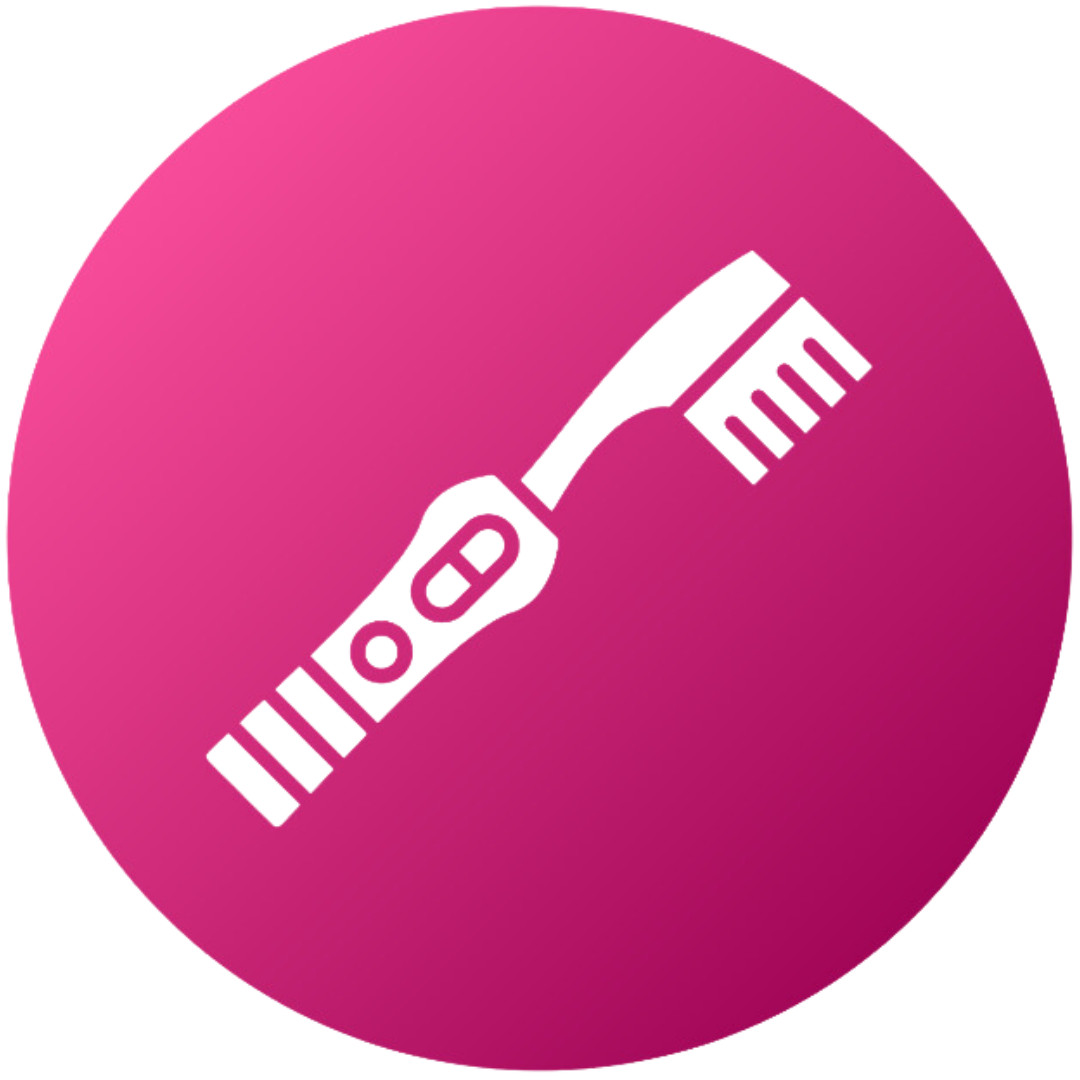



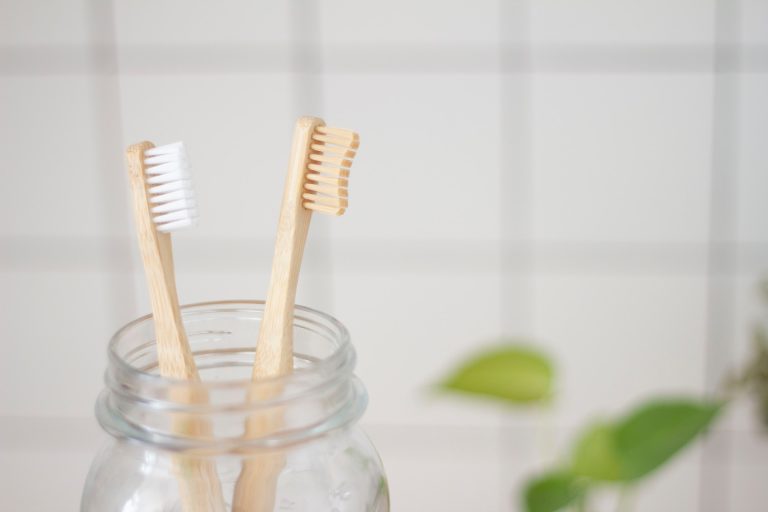
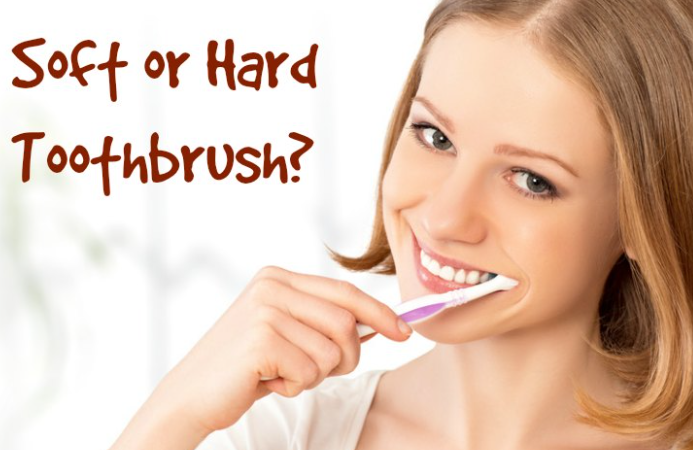
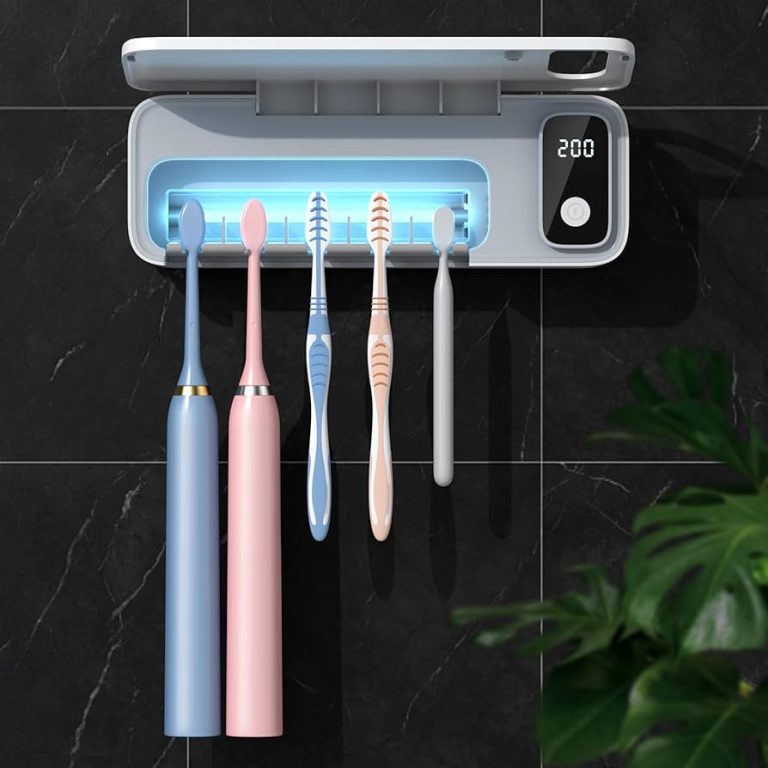
I never realized how many bacteria could be on my toothbrush! The boiling water method sounds effective. I’ll definitely try that. Thanks for sharing these tips!
How often should I really disinfect my toothbrush? Is weekly enough, or should it be more frequent?